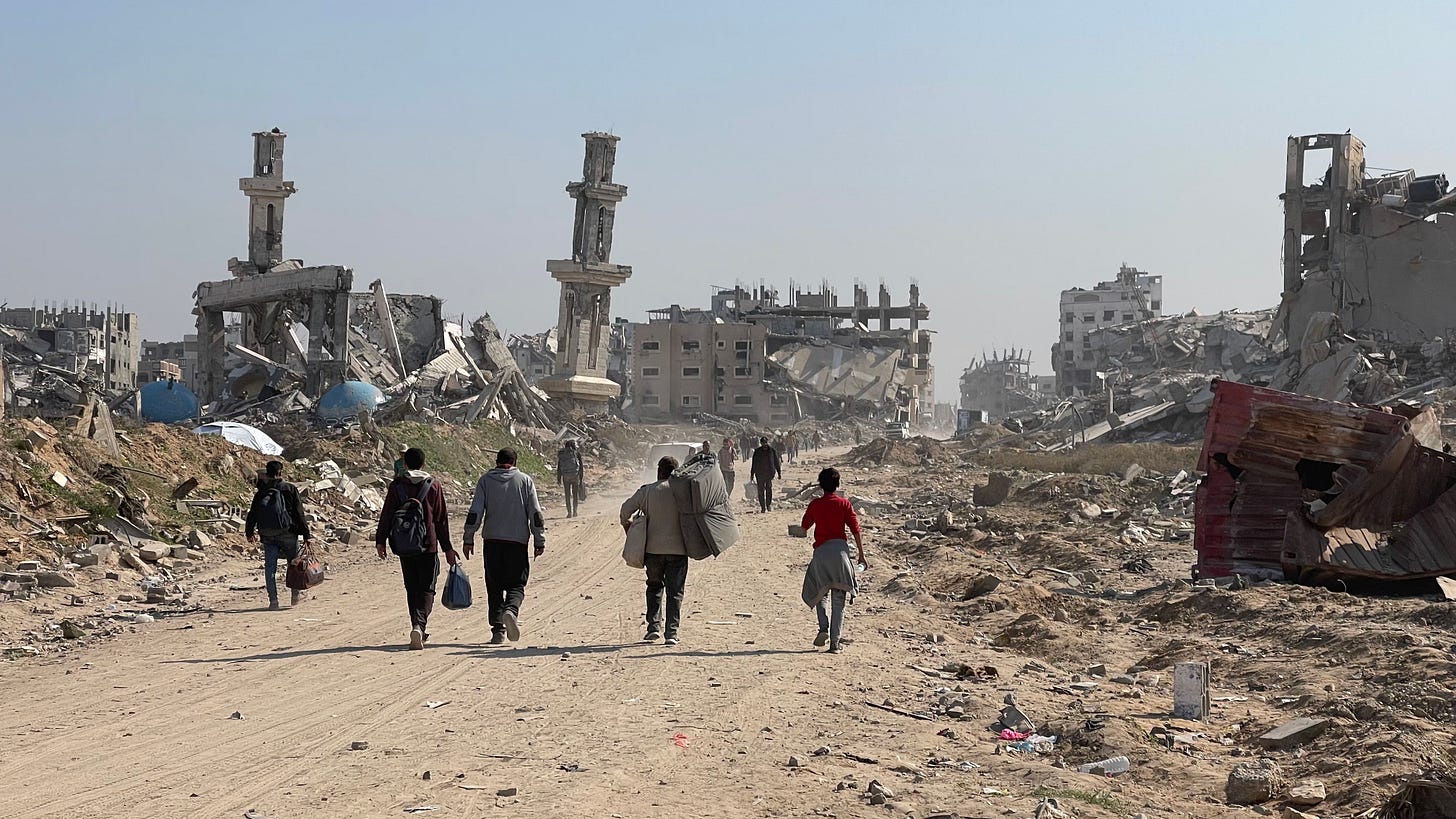The Gaza ceasefire agreement that President Trump achieved through his diplomatic efforts involved Tony Blair, Jared Kushner, and Steve Witkoff, who utilized their deep regional connections and negotiation expertise to establish the initial stage of Trump’s “strong, durable, everlasting peace” initiative. The agreement emerged from Egypt’s Sharm el-Sheikh resort after extended talks between Blair, Kushner, and Witkoff, who applied their combined experience to achieve this breakthrough following several months of diplomatic stagnation.
Blair’s Post-War Vision Takes Center Stage
Tony Blair established himself as the leader who would shape Gaza’s post-conflict future through his Gaza International Transitional—a Times of Israel source who took part in the talks explained that ending the conflict requires regional leaders Authority (GITA) proposal which Trump validated to unite international support for a five-year transitional governance structure to establish governance principles for Gaza which exclude Hamas from power and weapons and prevent its return to control.
The proposal from Blair establishes GITA as the highest authority for Gaza during the transition period under the UN Security Council mandate, with a governing board consisting of seven to ten members, including Palestinian experts, senior UN officials, and Muslim representatives for regional backing. The framework contains a “Property Rights Preservation Unit,” which defends Palestinian land ownership rights against previous plans to relocate people. The Media Line reports that Blair joined White House meetings with Trump and Kushner in August to discuss various matters, including the expansion of humanitarian aid, hostage situations, and post-conflict governance structures.
The former British Prime Minister stated through his office that he would not support any plan to move Gaza residents while promoting his framework as a better alternative to forced relocation proposals.
Kushner’s Strategic Return to Middle East Diplomacy
The return of Jared Kushner to lead Trump’s Middle East policy proved essential for turning the Israeli attack on Hamas officials in Qatar into a successful opportunity. The Trump administration, along with Jared Kushner and Witkoff, leveraged the crisis to create new opportunities for progress, rather than allowing the strikes to disrupt the stalled peace negotiations, as CNN documented.
The negotiations reached their decisive stage when Kushner and Witkoff arrived in Sharm el-Sheikh for the final talks, according to Politico. The U.S. and Israeli officials stated that the discussions would enter their most critical phase after Witkoff and Kushner joined the negotiations.
The negotiations moved at an unexpected fast pace, according to veteran negotiators who had predicted a five-day process, but Kushner and Witkoff shortened the timeline through their direct involvement. The envoys rushed to Cairo after the agreement to meet with President Abdel Fattah El-Sisi before obtaining Israeli cabinet approval in Jerusalem.
Witkoff’s Crisis Management and Diplomatic Innovation
Steve Witkoff utilized his crisis management skills to transform diplomatic challenges into advantageous negotiation opportunities through the complex mediation process. The situation became more manageable for peace talks when Witkoff joined Arab mediators to keep the process active while Trump made public statements about Netanyahu’s ill-timed actions.
The 21-point plan emerged from a combination of proposals from Arab nations and suggestions from European leaders, as well as Tony Blair’s post-war Gaza framework, which he developed with the White House over several months, according to a detailed analysis by CNN.
The administration followed a methodical approach to handle Gaza issues through “a large meeting focused on a comprehensive Gaza plan,” according to Witkoff. The White House received support from the Biden administration's Middle East negotiator, Brett McGurk, who confirmed that Biden’s team handled most of the work, while Witkoff managed Trump's transition priorities.
Building Arab Coalition Support
The three-man diplomatic team garnered extensive Arab support through their efforts to establish robust regional connections and address the vital needs of various groups. The meeting produced excellent results according to Witkoff. The 21 points for Middle East peace presented by us address all concerns of Israel, Palestine, and their neighboring countries, according to Witkoff, following the UN General Assembly sessions.
The Arab states required an absolute path toward Palestinian statehood as a condition for their backing. Still, this stance met opposition from Netanyahu and his right-wing allies, who rejected the idea. The negotiators established transitional arrangements that protected Palestinian political interests while also meeting Israeli security requirements.
Implementation Challenges and Future Prospects
The first part of the ceasefire demands that Israeli military units relocate their positions within 24 hours after cabinet approval, and Hamas needs to release hostages within 72 hours to secure Palestinian prisoner exchanges. A senior-level White House official informed Trump that hostage releases would commence on Monday; however, multiple obstacles exist for the arrangements. The White House Press Secretary Karoline Leavitt announced that President Trump will travel to the Middle East on Friday to oversee the implementation of the agreement. The administration remains involved at all times because it recognizes that sustained high levels of participation will prevent the deal from collapsing.
The Politico article highlights the fragile state of the breakthrough as the Trump administration focuses on preventing the agreement from disintegrating in the next few days. The deal faces its first implementation challenge because Blair needs to prove the effectiveness of his governance framework, Kushner needs to demonstrate the value of his regional connections, and Witkoff needs to show his crisis management abilities.



